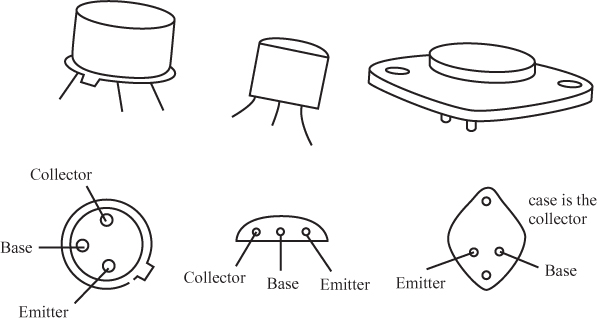Understanding Transistors
1 The diagrams in Figure 3.1 show some common transistor cases (also called packages). The cases protect the semiconductor chip on which the transistor is built and provide leads that can be used to connect it to other components. For each transistor, the diagrams show the lead designations and how to identify them based on the package design.
Transistors can be soldered directly into a circuit, inserted into sockets, or inserted into breadboards. When soldering, you must take great care because transistors can be destroyed if overheated. A heat sink clipped to the transistor leads between the solder joint and the transistor case can reduce the possibility of overheating. If you use a socket, you can avoid exposing the transistor to heat by soldering the connections to the socket before inserting the transistor.
Get Complete Electronics Self-Teaching Guide with Projects now with the O’Reilly learning platform.
O’Reilly members experience books, live events, courses curated by job role, and more from O’Reilly and nearly 200 top publishers.


